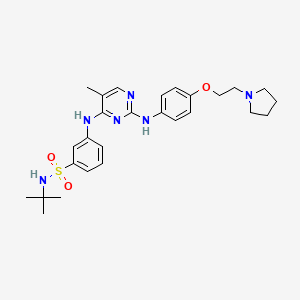
Celgene Corporation (NASDAQ: CELG) announced the U.S. Food and Drug Administration (FDA) approval of Inrebic (fedratinib) for the treatment of adult patients with intermediate-2 or high-risk primary or secondary (post-polycythemia vera or post-essential thrombocythemia) myelofibrosis.1
“The approval of Inrebic is another important milestone for Celgene and underscores our commitment to people living with blood cancers,” said Jay Backstrom, M.D., M.P.H., Chief Medical Officer for Celgene. “We are excited to provide Inrebic as a new treatment option that may be used in patients with myelofibrosis, including patients previously treated with ruxolitinib.”
“Myelofibrosis can cause patients to suffer in many ways, including experiencing debilitating symptoms,” said Ruben Mesa, M.D., FACP, Director of the Mays Cancer Center at UT Health San Antonio Cancer Center MD Anderson. “There has not been a new treatment approved for this disease in nearly a decade. With Inrebic, physicians and patients now have another option available for myelofibrosis.”
The Inrebic development program consisted of multiple studies (including JAKARTA and JAKARTA2) in 608 patients who received more than one dose (ranging from 30 mg to 800 mg),1 of whom 459 had myelofibrosis,1 including 97 previously treated with ruxolitinib.1 The JAKARTA study evaluated the efficacy and safety of once-daily oral doses of Inrebic compared with placebo in patients with intermediate-2 or high-risk, primary or secondary (post-polycythemia vera or post-essential thrombocythemia) myelofibrosis who were previously untreated with a JAK inhibitor, had enlarged spleens (a condition known as splenomegaly), and had a platelet count of ≥50 x 109/L (median baseline platelet count was 214 x 109/L; 16% <100 x 109/L and 84% ≥100 x 109/L).1,2 In the JAKARTA study, spleen volume was reduced by 35% or greater, when assessed from baseline to the end of cycle 6 (week 24), with a 4-week follow-up scan, in 37% (35 of 96) of patients treated with INREBIC 400 mg versus 1% (1 of 96) of patients who received placebo (p<0.0001).1 INREBIC also improved the Total Symptom Score as measured by the modified Myelofibrosis Symptoms Assessment Form (MFSAF) v2.0 diary2 (night sweats, itching, abdominal discomfort, early satiety, pain under ribs on left side, bone or muscle pain) by 50% or greater when assessed from baseline to the end of cycle 6 in 40% of (36 of 89) patients treated with 400 mg, versus 9% (7 of 81) of patients who received placebo (p<0.0001).1
Inrebic has a Boxed Warning for serious and fatal encephalopathy, including Wernicke’s. Serious encephalopathy was reported in 1.3% (8 of 608) of patients treated with Inrebic in clinical trials and 0.16% (1 of 608) of the cases were fatal. Wernicke’s encephalopathy is a neurologic emergency resulting from thiamine (Vitamin B1) deficiency. Thiamine levels should be assessed in all patients prior to starting Inrebic, periodically during treatment, and as clinically indicated.1 Do not start Inrebic in patients with thiamine deficiency; replete thiamine prior to treatment initiation. If encephalopathy is suspected, immediately discontinue Inrebic and initiate parenteral thiamine. Monitor until symptoms resolve or improve and thiamine levels normalize.
In the JAKARTA study, serious adverse reactions occurred in 21% of patients treated with Inrebic 400 mg once daily (n=96), with the most common (≥2%) being cardiac failure (5%) and anemia (2%).1 Fatal adverse reactions of cardiogenic shock occurred in 1% of patients.1 Permanent discontinuation due to an adverse reaction occurred in 14% of patients. The most frequent reasons for permanent discontinuation in ≥2% of patients receiving Inrebic included cardiac failure (3%), thrombocytopenia, myocardial ischemia, diarrhea, and increased blood creatinine (2% each).1
Dosage interruptions due to an adverse reaction during the randomized treatment period occurred in 21% of patients who received Inrebic. Adverse reactions requiring dosage interruption in >3% of patients who received Inrebic included diarrhea and nausea. Dosage reductions due to an adverse reaction during the randomized treatment period occurred in 19% of patients who received Inrebic. Adverse reactions requiring dosage reduction in >2% of patients who received Inrebic included anemia (6%), diarrhea (3%), vomiting (3%), and thrombocytopenia (2%).
“Inrebic is a much-welcomed new treatment for the myelofibrosis community,” said Ann Brazeau, Chief Executive Officer and Founder, MPN Advocacy and Education International. “This FDA approval marks an important milestone for people living with myelofibrosis as we embark on making greater strides in the diagnosis, understanding and treatment of this disease.”
https://pubchem.ncbi.nlm.nih.gov/compound/Fedratinib
https://en.wikipedia.org/wiki/Fedratinib


